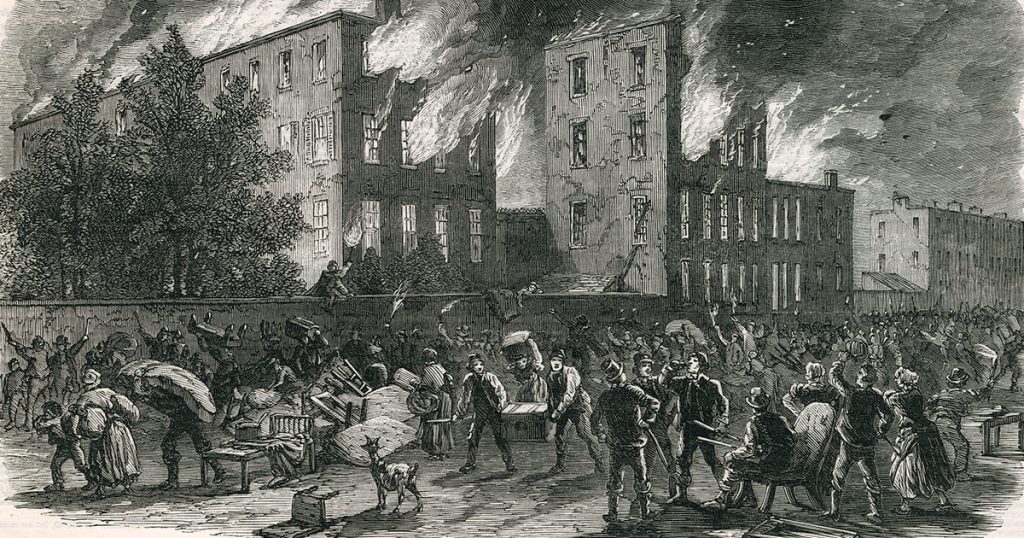What had begun as a violent attempt to stop the draft by targeting military and governmental buildings, soon turned into one of the most vicious race riots in American history. The four-story Colored Orphan Asylum on Fifth Avenue, home to more than 200 children was financially stable and well stocked with food, clothing and provisions. To the infuriated mob it was apparently a symbol of black upward mobility. After looting the building, rioters burned it to the ground. Miraculously the children were spared. Other African Americans in the path of the rioters were not so fortunate. At least 11 men were lynched from lampposts and their bodies subsequently burned or mutilated. A group of men and boys mortally attacked a black sailor named William Williams -jumping on his chest, stabbing him repeatedly and crushing his body with paving stones while a howling group of onlookers urged them on, demanding vengeance on every black person in New York and cheering for Jefferson Davis.

His policemen overwhelmed, Mayor George Opdyke reluctantly appealed for state and federal assistance. Governor Horatio Seymour arrived on July 12 and attempted to calm the situation by addressing a crowd assuring them that the draft was unconstitutional. More importantly, 800 soldiers garrisoning forts in the harbor under the command of General John Wool were brought into the city. Harsh measures were used to clear the streets including rifle volleys. Five regiments from the Army of the Potomac, which had been pursuing Robert E. Lee following the battle of Gettysburg just 10 days prior, were detached and rushed to New York. Their arrival, coupled with a calming speech by Roman Catholic Archbishop John Hughes at old St. Patrick’s Cathedral before a crowd of 5,000 on the 14th, ended the violence.
The exact death toll during the four days of rioting is unknown. Historian James McPherson believes at least 120 civilians were killed although other estimates are much higher as many bodies were believed to have been thrown into the East River and never recovered. Herbert Asbury, the author of the 1928 book Gangs of New York upon which the 2002 film is based, puts the figure at more than 2,000 with an additional 8,000 wounded. At least 50 buildings were burned to the ground with total property damage estimated at more than $1 million.
Next
Previous


